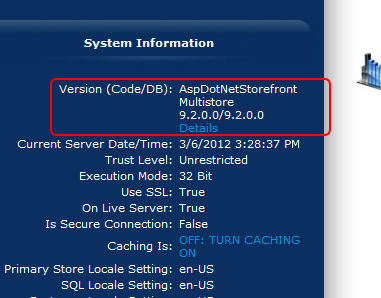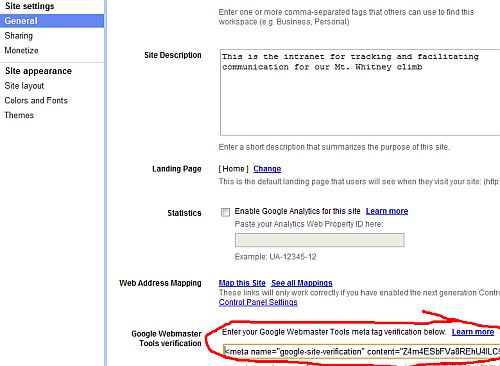Can’t be there myself, so figured I’d post this up for you and for me to catch up on what’s new at Google I/O. Click through to the full article to view the keynote tomorrow morning…
Can’t be there myself, so figured I’d post this up for you and for me to catch up on what’s new at Google I/O. Click through to the full article to view the keynote tomorrow morning…
 I among many others, mourned the loss of Wave. While it had many fantastic features, I think it was exactly this broad feature-set that caused it’s early demise. One of the features in Wave that I thought was a killer app was the ability to easily hold group discussions while collaborating on documents.
I among many others, mourned the loss of Wave. While it had many fantastic features, I think it was exactly this broad feature-set that caused it’s early demise. One of the features in Wave that I thought was a killer app was the ability to easily hold group discussions while collaborating on documents.
Well today, Google Docs announced their new Discussion feature that will go a long way towards resolving this issue. Watch the video for more details and see me after the break…
Been in touch with a couple of friends that have converted over to Google Sites from their old websites and we’ve added them to Google Webmaster Tools (so we can generate a sitemap) and submitted that sitemap back to Google Webmaster Tools.
In the past this has always been a pretty quick route to get sites indexed (or in these cases re-indexed) by Google. That being said, it appears that Google is dragging their heels. Both Advantage Insurance Group and Lake Forest Acupuncture both have been having Google download and read the sitemaps for the last two weeks and (as recently again as yesterday) and they still stand at 0% found in the Google Index.
Anyone else heard of such behavior recently? Any thoughts on what is going on that is slowing down the indexing of the sitemaps?
If you’ve followed the directions that we posted in our previous posting on Sitemaps for Google Sites and you find that the sitemap is empty (not missing but actually empty) then you’ll need to follow these steps to get your sitemap completed:


So you’ve got a Google Sites website and you want to submit a sitemap to your Google (and other site engines) but how do you do it? Sure, with static sites you can go ahead and use a 3rd party system that will crawl the site and create an xml file for you but if you do that, how do place that file into your Google Sites site?
Well, you could upload it to a file cabinet page but Google comes to the rescue, as you can imagine, in that there is an automated sitemap that stays sync’ed with your website that you can submit to tools but it can kind of confusing to find it.
This tutorial should be helpful to our clients wishing to access project intranets we’ve established in the ExhibitA.com domain using Google Sites. The challenge comes when you try and log into a Google Site (GS) that is part of a Google Apps domain (GA), it isn’t immediately obvious how to log in if email address you are using is part of a different GA domain or is a standard Google Account (like for Gmail or Google Analytics, Checkout, etc).
While the graphics and the discussion will be specfic to logging into a GS on ExhibitA.com, it can be applied to any GS hosted on a GA domain.
 Google announced today that many of the elements of Google apps will no longer support older browers; most notably Microsoft’s Internet Explorer 6.
Google announced today that many of the elements of Google apps will no longer support older browers; most notably Microsoft’s Internet Explorer 6.
They are determined to not let lack of support for faster Javascript processing or support HTML5 get in the way of providing a great interface for their customers. As such, after March 1, 2010, Google Docs suite and Google Sites editor will not work with IE earlier than 7.0, Firefox below v3.0, Chrome below 4.0 and Safari below 3.0. Starting next week they will present messages to users to the this effect and recommending that they update.
More importantly, they intend to roll out Google Mail (Gmail) and Google Calendar later in the year. Given that Microsoft has already put out a cry to people to STOP USING IE6, I think that Docs and Sites will not be the death knell but I’m certain that when Gmail stops supporting it, Google will have effectively put the last nail in the coffin of this antiquated web browser.
I say, ABOUT TIME!
What do you think?
Google Sites, a member of the Google Apps family as well as a stand-alone feature, has added site template to the feature list of this great product. Now, instead of the relatively lame themes you now have complete site templates that include not only the overall theme of the site but also suggested content, structure and gadgets that take full advantage of the platform.
Now don’t get me wrong, the themes were nice for personal sites in a GeoCities/FrontPage kind of way but there is so much you can do with Templates. Admittedly, many of the initial templates that are available are still a little "blocky", there are a number that one would be hard pressed to tell weren’t custom sites if it weren’t for the
The Data Liberation Front strikes again!
Google announced Friday that their is now a Google Data API for Google Sites. With this API, site administrators can now programatically:
For those of you using Google Apps, you might be interested in the following new features:
Not using Google Apps yet? Let us help you take fullest advantage of all this Googley goodness with our Google Apps Setup Service.